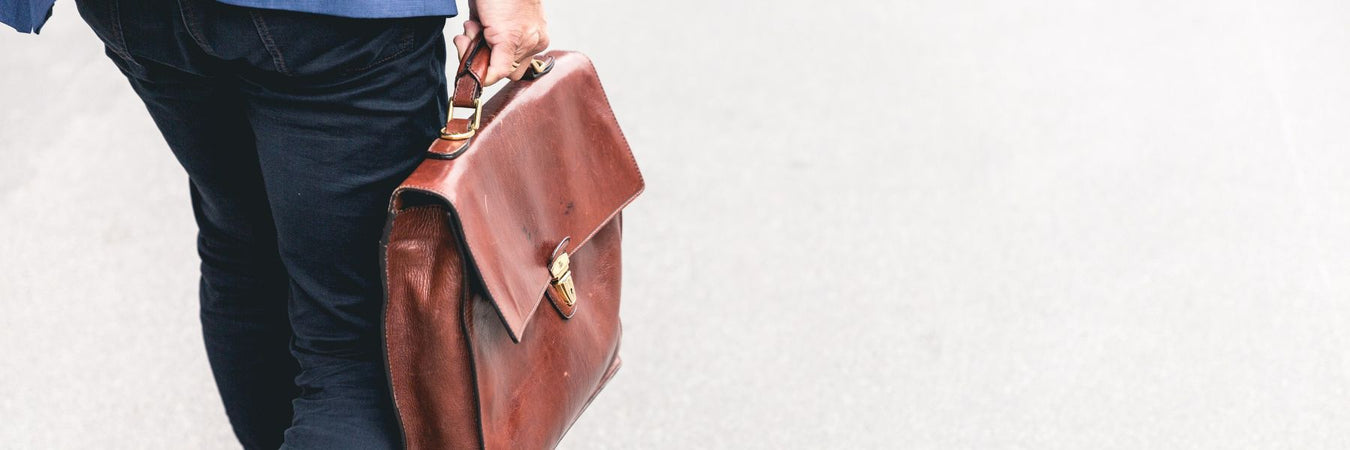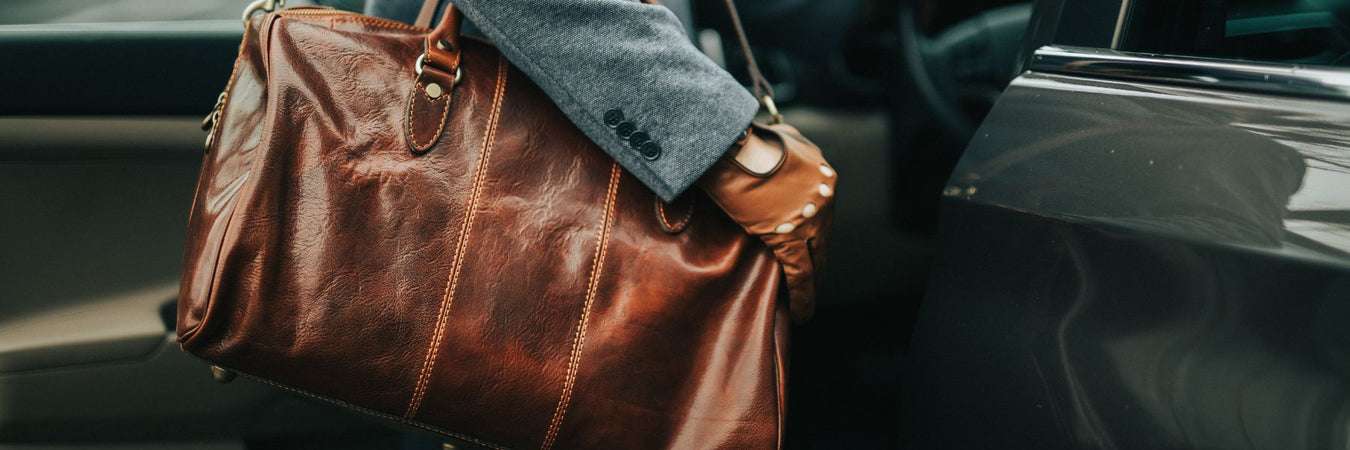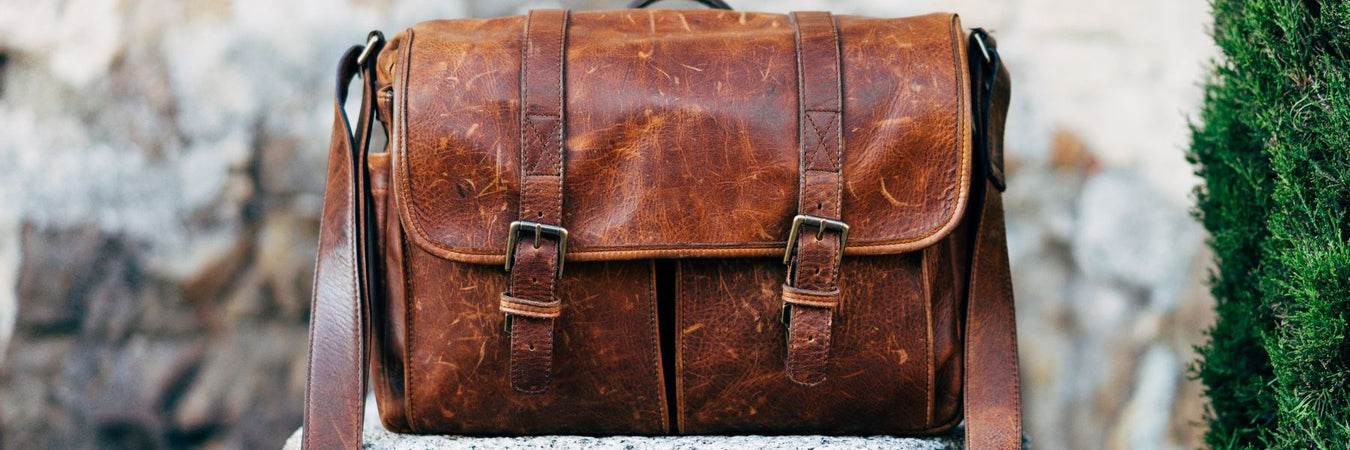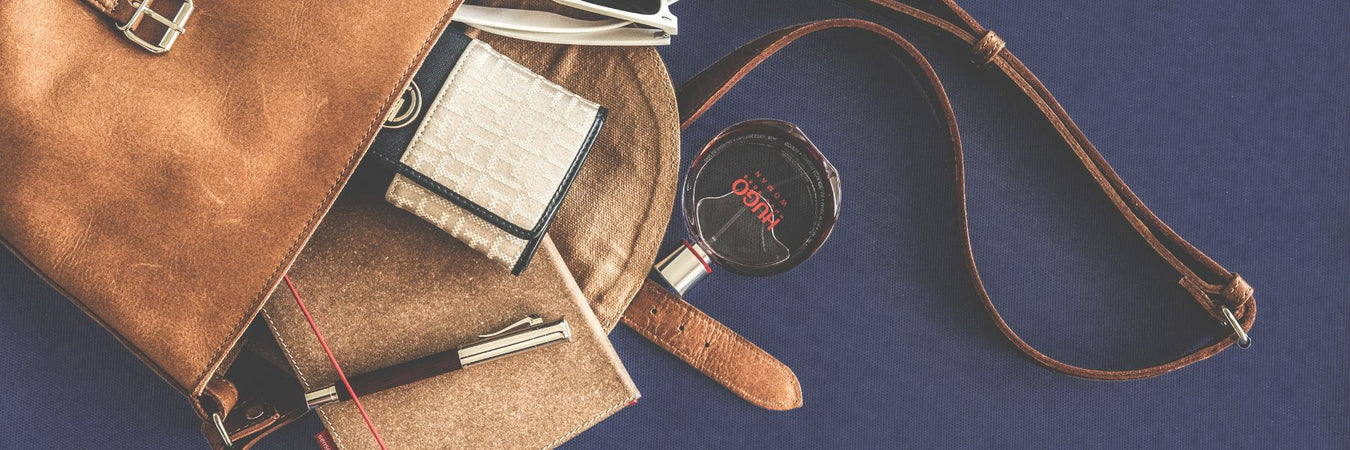Why Leather Is More Eco-Friendly And Good For The Environment?

I am durable.
I am as elegant as a Lady of Victorian era.
I am chic.
I suit all lifestyles, be it the paleothilic age or the modern age.
I am timeless.
The more I grow old, the more beaten I look and beaten is the new trend.
I am strong and powerful.
I have an intoxicating smell.
One can’t imagine a rock concert without me.
I am flexible.
I am resistant to fungi, water, dust and abrasions.
I am one of the favourite fabrics.
I am eco-friendly.
I have many colours, types and palettes.
Guess who I am?
Guess! Guess! Guess!
Oh yes! You got it right!! It’s me –LEATHER.
It was an easy riddle to solve wasn’t it?
Because leather is one of your favourite too.
Anything that is made out of leather signifies power, quality and appreciation of elegance.
Leather bags have been in use since time immemorial though it’s manufacturing style and method has evolved over time.
Why prefer leather to its alternatives?
Many folks are perplexed by the distinctions between fake and genuine leather. The fact is that both have advantages and disadvantages, and it all comes down to personal choice and what you want to acquire from the content. Purchasing leather products might frequently require much thought to ensure that you are selecting the best option for you.
The primary distinction between the two is that real leather is manufactured from the hides of animals such as cows, buffalo, or goats. Faux leather is manufactured from a synthetic foundation that is then colored and textured with paraffin, stain, or polyurethane.
-
Main Differences
The main distinction between the two would be that real leather is really one-of-a-kind since no two skins are alike. Cowhide leather frequently bears signs of its origin, such as stretch marks, bruises, and fissures, which add to the product's individuality and attractiveness.
Genuine leather also contains irregular pores and markings, which distinguishes this from the others and gives it a unique shape. Because the pores are synthetically manufactured, faux leather is fairly consistent – even if it is designed to seem realistic.
-
Long-Lasting Quality
The durability of genuine leather is one of its benefits. Genuine leather can survive for years without deterioration. It ages with a piece of furniture; the natural type of product implies that usage only improves the appearance of the leather.
The low cost of fake leather is a major selling factor. Because it is consumed, it is frequently far less expensive than real leather.
-
Distinguishing Features
The rich appearance, feel, and fragrance of genuine leather distinguishes it from imitation leather. Many imitation types of leather, on the other hand, can be just as nice as the genuine thing - it all depends on personal choice and what you're seeking.
Everything made of leather symbolizes power, richness, and respect for elegance. The leather bag is one of the most sought-after products made from this renowned and coveted material. People save leather bags for a variety of situations, including adventurous sports, informal shopping, and elegant dinners.
Leather bags have been around from ancient times, however, the production style and process have changed through time.
A growing argument is that synthetic bags should be used instead of leather bags. This so-called animal-friendly Pleather. Vinyl is a non-biodegradable material. It has a negative impact on animals, pollutes the air and water, and damages the ecosystem in general. Leather, on either hand, is organic and hence disposable (Sorry P.E.T.A).
As a result, leather refutes the charge that fashion is unfriendly to the environment. It is exactly the circumstance in which a person begins to use plastic tables instead of hardwood tables in order to conserve forests. Plastic is notoriously difficult to recycle.
Impact of Leather Alternatives on the environment:
Leather has a significant environmental effect, not to mention ethical problems about animal farming. However, it is impossible to beat this long-lasting and flexible material.
Sadly, “vegan leather” is more than simply a poor alternative for animal skins' functioning. It's also a practically meaningless advertising phrase to employ in place of the phrase "plastic." This implies that, although their eco-friendly label, these leather substitutes have many of the same environmental issues as other synthetic materials, and in some circumstances are much worse.
-
Faux Leather:
Polyester and faux leather are both fruits in various colors. One type of faux leather is really polyester disguised as leather. Both materials will have the same characteristics with a little difference.
Faux leather can sometimes be manufactured using cotton and other materials, although it is usually made from the same petrochemicals as polyester. Both fabrics have a low breathable capacity but are excellent at trapping heat and keeping you comfortable.
Faux leather does not stretch well yet does not peel. It is also utilized in many apparel goods, which saves you a lot of money. Faux Leather items are often inexpensive and in plentiful supply.
-
Pleather:
Pleather has a bad reputation for being low-quality, therefore it's generally promoted as "vegan leather" these days. Pleather, like vinyl, is essentially plastic (polyurethane or polypropylene) on a rayon backing. Both layers of the fabric are petroleum-based, which has a major impact on the environment.
Both the production method (which still uses hazardous chemicals) and the finished product are less carcinogenic than PVC. As a result, polyurethane pleather is a better alternative than vinyl-based vegan leather.
-
Rexine:
Rexin is more durable and hydrophobic than other fabrics, making it a viable alternative to leather in all but the most demanding situations. Rexin is often manufactured of rubber, which has major environmental consequences because rubber takes more than 50 years to degrade naturally.
If the rubber is organic, it may be a better option than the polyester base used in most leather substitutes. The wax, on the other hand, is generally paraffin, which is another petroleum product.
-
Polyester:
A few very common questions are “Do Polyester feel like leather?”, “ Are both of them the same?” etc. No, the most that polyester manufacturers can aspire for is to replicate the characteristics of leather, but man-made products can never be transformed into the actual stuff. Polyester, as you are undoubtedly aware and sick of seeing, is produced from petroleum chemicals and acid.
Those fundamental components simply do not work with the manner leather is delivered to us. Even in terms of cost, polyester is not the same as leather. The former fabric is far less expensive than leather, and your maintenance expense will be much cheaper as well.
People choose to wear polyester over leather for these two reasons alone, despite the fact that polyester takes anywhere from 20 to 200 years to degrade in a landfill. Leather biodegrades faster and does not affect the environment when it does.
Polyester may outperform leather in terms of strength. Some polyester straps are reported to be extremely durable, and they are resistant to chemicals, alcohol, and oil. It is extremely resistant to sunlight and wounds, making it a difficult material to damage or ruin.
-
Nylon:
Nylon is an artificial polymer invented by Wallace Carothers of DuPont Chemicals in 1935. It is, in essence, plastic threads. Nylon is found in a wide range of everyday goods, including toothbrushes, umbrellas, and children's toys.
Nylon is a low-cost synthetic material that is both lightweight and flexible. While it is usually the less expensive alternative, it is not as robust as leather and does not last nearly as long. Scrubbing it down with the wet cloth also quickly helps clean nylon and does not require conditioning; nevertheless, it stains extremely easily.
Nylon is produced in part from coal and petroleum. In addition to offering some of the world's dirtiest industry sectors, nylon production has a number of additional direct environmental consequences.
Nitrous oxide, a greenhouse gas 300 times more powerful than carbon dioxide, is produced during the production of nylon. The production of nylon is a highly thirsty process; enormous volumes of water are needed to chill the fibers, which can be a cause of pollution and contamination in the environment. The production of nylon is a very energy-intensive process that leads to environmental deterioration and global warming.
-
Silk
The environmental impact of silk is varied. It is a natural fiber that will deteriorate. Mulberry trees, which support the majority of silkworms, require minimal chemical fertilizers, may be cultivated sustainably, and use less water than cotton.
However, the Higg Materials Sustainability Index (MSI), which ranks the environmental impact of fiber from raw fiber production to fabric, ranks silk higher than almost all other fibers, mainly due to its global warming potential and use of fossil fuels chiefly in the reeling and processing stages. Silk is not classified in the Made-By Environmental Benchmark for Fibres.
Leather vs. Vegan Leather (Plastic Leather).
Vegan leather is a material that resembles leather but is made from synthetic or plant materials rather than animal skins.
According to PETA, it is most often produced from two distinct plastic polymers: polyurethane (PU) and polyvinyl chloride (PVC). They are most usually utilized because of their wrinkled texture, which helps to give the illusion of real leather.
Vegan leather may also be manufactured using organic elements such as pineapple leaves, cork, apple peels, and recyclable plastic, in addition to these synthetic components.
Making of Vegan Leather
Synthetic leather is made using different chemicals and a whole diverse manufacturing process than natural leather. The most typical technique to manufacture imitation leather is to bond a plastic laminate to a fabric substrate; the plastic materials used in these coatings differ, and this determines whether or not it is environmentally friendly.
Although PVC is no longer as widely used as it was in the 1960s and 1970s, it is still included in the makeup of certain vegan leather. PVC emits dioxins, which are potentially hazardous in confined areas and especially hazardous when burned. Plasticizers such as phthalates are also used to make it stretchable. They are very hazardous, depending on the kind of phthalates used. Greenpeace has called it the "single worst ecologically harmful form of plastic.
The more contemporary and somewhat less harmful plastic is PU, which is continuously being technologically improved to decrease faults like as the dangerous toxins it emits during manufacture and the oil-based polymer it is created with, which need the usage of fossil resources.
Difference between Real and Vegan Leather
When selecting between vegan and genuine leather, most consumers are concerned about the effects on natural habitats. However, while the name vegan leather may indicate a product that is good for the environment, this is not necessarily the case.
Faux leather is known as vegan leather since the fabric utilized isn't ever derived from animal hides. However, while it is a great gain for animal enthusiasts, the development of synthetic leather is not good for the environment or humans owing to chemicals in the polymers used to produce it.
Hazardous dioxins are released during the manufacturing and disposal of PVC-based synthetic drugs, which can cause embryonic and fertility problems, as well as cancer. The synthetic materials used in vegan leathers do not entirely decompose, and however they can be broken up to some extent, they can also produce harmful particles and phthalates that can endanger the lives of animals and the environment.
Talking about features:
-
Durability.
Leather bag lasts for 7-10 years with all kinds of beatings whereas fake leather lasts for 1 year.
-
Chemical Used
Veg tanned leather made by vegetable oil only whereas all the fake leather needs a lot of chemicals. Chemicals are disposed of in forests and rivers.
-
The byproduct of the meat industry.
Leather is not the bad guy here! Well, leather is nothing but the byproduct of the meat industry! So, next time when you eat a cheeseburger feel bad about that and not your leather bag!
FUN FACT: India is the 2nd biggest manufacturer of beef and huge into mutton eaters. The animal skin is usually disposed of to tanneries. No animals are being killed for the leather. Optimum utilisation of resources which anyway will decompose.
-
Decomposition
Plastic never dies. It can be recycled! You must be aware of how animals esp, marine life is becoming endangered because of the plastic getting settled at the bottom of water bodies! Do you want to increase the level of plastics by buying artificial leather items
Of course, you care for the environment that’s why you are choosing vegan leather products! But, are you really helping the environment?
We are here to help you to make an informed decision! Shop- Guilt Free!!
So leather lovers, fear not. Go give life to a dead hide and life to your style.

To grab the latest collection of the best leather bags manufactured in a sustainable manner follow the link below:
Where Leather Gets Better






Leave a comment